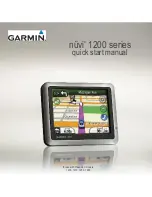
(OTA) and allows CalAmp custo
mers to monitor unit health status across your customers’ fleets to
quickly identify issues before they become expensive problems.
2.2.6 LMU Manager™
LMU Manager is the primary configuration tool in the CalAmp system. It allows access to almost every
feature available to the LMU-3030
™. Unlike the backend software, it has the option of talking directly
to an LMU-3030
™ or making a request forwarded by the LM Direct™ server.
For further details on using LMU Manager, please refer to the
LMU Manager Users Guide
.
3
– Hardware Overview
3.1 Location messaging unit LMU-
3030™
3.1.1 LMU-
3030™ Handeling Precautions:
Electrostatic Discharge (ESD)
Electrostatic discharge (ESD) is the sudden and momentary electric current that flows between two
objects at different electrical potentials caused by direct contact or induced by an electrostatic field.
The term is usually used in the electronics and other industries to describe momentary unwanted
currents that may cause damage to electronic equipment.
ESD Handling Precautions
ESD prevention is based on establishing an Electrostatic Protective Area (EPA). The EPA can be a
small working station or a large manufacturing area. The main principle of an EPA is that there are no
highly charging materials in the vicinity of ESD sensitive electronics, all conductive materials are
grounded, workers are grounded, and charge build-up on ESD sensitive electronics is prevented.
International standards are used to define typical EPA and can be obtained for example from
International Electro-technical Commission (IEC) or American National Standards Institute (ANSI).
This ESD classification of the sub assembly will be defined for the most sensitive component, therefore
the following classifications apply:
Class 1B
– Human Model (< 1 kV)
Class M1
– Machine Model (< 100V)






































